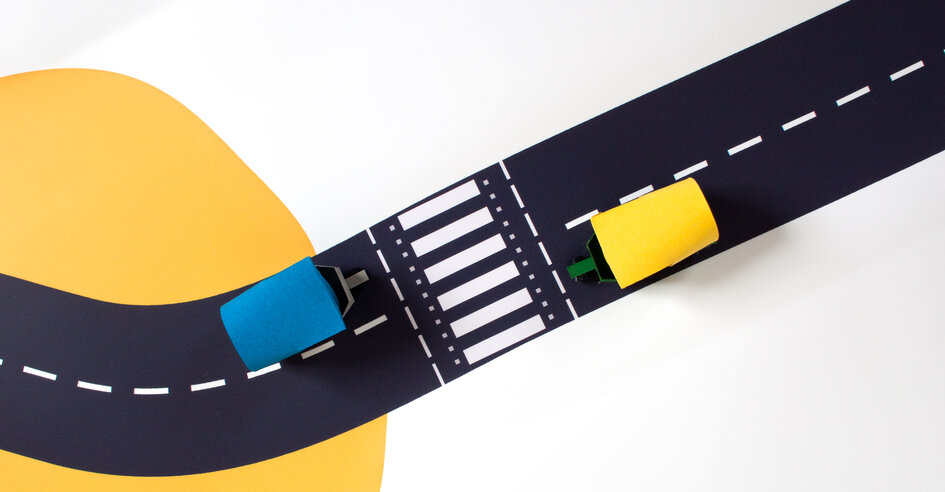
Distracted driving, everyone hates it but many people do it – new study
Insurance company Esurance has a new study out on distracted driving in the USA, and it makes for interesting reading. Almost everyone agrees distracted driving is bad, yet it’s still remarkably prevalent. Even drivers who report rarely driving distracted also report that they engage in distracting behaviors. The study also raises some questions about the growing complexity of modern vehicles, particularly the user interfaces they confront us with.
Almost everyone does it
According to official figures, around 10 percent of all road deaths are due to distracted driving. That percentage has held steady for a while now after peaking at 15 percent a decade ago. In the time since, governments and the auto and tech industries haven’t been ignoring the problem. Texting-while-driving bans are ever more common. Smartphones now have do not disturb modes, some of which can turn on automatically. Phones can also cast their displays and certain apps to the car’s center stack using Android Auto and Apple CarPlay.
 And modern vehicles are increasingly packed full of advanced driver aids—what the industry calls ADAS (advanced driver assistance systems)—like adaptive cruise control, lane keeping, blind spot monitoring, collision alerts, and so on.
And modern vehicles are increasingly packed full of advanced driver aids—what the industry calls ADAS (advanced driver assistance systems)—like adaptive cruise control, lane keeping, blind spot monitoring, collision alerts, and so on.
The Esurance report includes survey data from more than a thousand participants. More than 90 percent said that browsing for apps, texting, and emailing were distracting. Yet more than half of daily commuters admitted to doing it. The survey also found that the longer your commute, the greater the chance is you’ll get distracted, probably by your phone.
Even participants who reported they were “rarely distracted” admitted to distracting behavior like talking on the phone or even viewing GPS Navigation data. (Any task performed while driving should be able to be performed in under two seconds to avoid becoming a distraction.)
Esurance also wanted to know if ADAS was actually making us safer or lulling drivers into a false sense of security. Almost half said semi-autonomous technology (like adaptive cruise control) makes their driving better, but one in ten of those surveyed believe the latter. But an important finding was that drivers of cars with lots of tech in them reported being more distracted than drivers of older or less advanced vehicles.

In addition to the survey, Esurance interviewed a number of drivers of modern, ADAS-equipped cars. The report features anecdotes about automatic emergency braking saving someone from a crash but also complaints about complex user interfaces some drivers have to contend with.
It’s not an equal playing field
 If the last few months have taught me anything, it’s that there is a lot of diversity out there when it comes to implementing ADAS and designing good automotive UIs and UXes. Three cars from three different OEMs can all have similar-sounding systems that nevertheless have different operational domains or use different ways to alert or warn the driver.
If the last few months have taught me anything, it’s that there is a lot of diversity out there when it comes to implementing ADAS and designing good automotive UIs and UXes. Three cars from three different OEMs can all have similar-sounding systems that nevertheless have different operational domains or use different ways to alert or warn the driver.
Take the combination adaptive cruise control and lane keeping; these assists will behave very differently in a Tesla Model X (letting you go hands free for minutes at a time, automatically changing lanes for you) than in a Nissan Leaf (does a good job of staying centered in a lane, nags you a lot and disengages after 15 seconds) or a Toyota Camry (warns you when you depart a lane, couldn’t feel it steer for me at all).

Different companies also have different alert philosophies—a lane departure warning might consist of a haptic alert (vibrating seat or steering wheel), a visual alert on the main instrument panel or aheads up display, an audio alert, or a combination of some or all of those. Those alert noises made it into Esurance’s list, and 29percent of those surveyed said they found in-car warning sounds to be a distraction.
The best ADAS implementations can be a boon, particularly for drivers who log a lot of miles highway driving. But highway driving is already relatively safe, and not everyone is convinced semi-autonomous systems are the way to go. It’s clear they are a life-saving safety net for the distracted or drowsy driver, yet some maintain that semi-autonomous systems are dangerous, as they can foster “mode confusion”—you think the car is driving itself when it isn’t.
 A vivid example can be seen in the two official reports into the fatal Tesla Model S crash in Florida in May 2016. The National Highway Traffic Safety Administration inquiry concluded that the car was not at fault, and that version of Autopilot (which has since been superseded by a new version that remains to become as capable) had reduced Tesla’s crash rate by almost 40 percent. However, the National Transportation Safety Board conducted a separate inquiry with a very different conclusion. Unlike NHTSA, NTSB did point its finger at the car, citing issues with the car’s operational design and pointing to the Tesla’s UX as a major factor in the crash.
A vivid example can be seen in the two official reports into the fatal Tesla Model S crash in Florida in May 2016. The National Highway Traffic Safety Administration inquiry concluded that the car was not at fault, and that version of Autopilot (which has since been superseded by a new version that remains to become as capable) had reduced Tesla’s crash rate by almost 40 percent. However, the National Transportation Safety Board conducted a separate inquiry with a very different conclusion. Unlike NHTSA, NTSB did point its finger at the car, citing issues with the car’s operational design and pointing to the Tesla’s UX as a major factor in the crash.
What can we do about it
Esurance ends its report with some recommendations for drivers—nothing revolutionary, just common sense steps. Put your phone somewhere you can’t see it or at least silence notifications while driving. Set your navigation destination before you set off, rather than while you’re dodging other road users. Drive, don’t eat or apply make up or shave behind the wheel. And pull over if you need to attend to an emergency or a distracting child.
We know that young people are glued to their phones for all sorts of social and entertainment reasons but from the early onset of technology and road safety, we have advocated for a distraction free road user experience.
Will you pledge to be distraction free?
Adapted from the original article written by Jonathan M. Gitlin here.


 To this end, both cities are lowering vehicle speed limits and improving road infrastructure to protect people walking and cycling. Pilot projects last year, led by the cities with technical guidance from
To this end, both cities are lowering vehicle speed limits and improving road infrastructure to protect people walking and cycling. Pilot projects last year, led by the cities with technical guidance from 













 Between March & May 2018, 2 Traffic Police Personnel were knocked dead in Kampala, 1 was
Between March & May 2018, 2 Traffic Police Personnel were knocked dead in Kampala, 1 was  It gets rather personal when the same
It gets rather personal when the same  In response to a growing global concern, to our lives and the lives of others, perhaps the Agama Lizard has the right approach. We have to try things beyond our comfort zone to survive.
In response to a growing global concern, to our lives and the lives of others, perhaps the Agama Lizard has the right approach. We have to try things beyond our comfort zone to survive.


 Our trainings are as creative, diverse and energetic as our youth participants themselves.
Our trainings are as creative, diverse and energetic as our youth participants themselves.